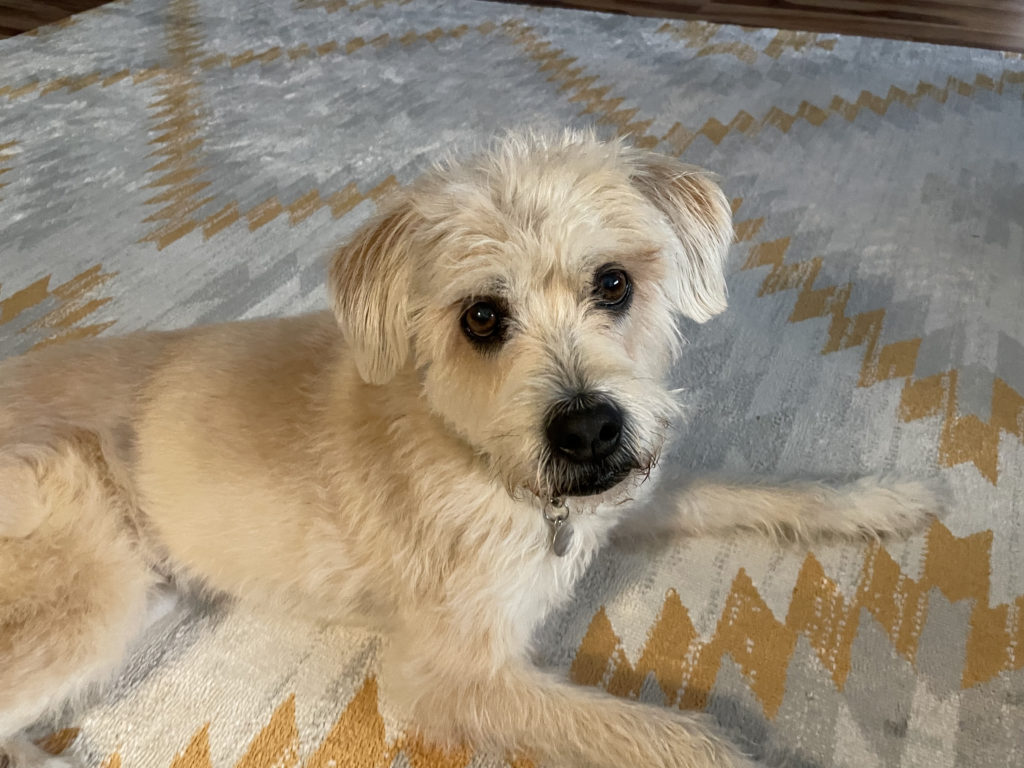How to Help a Dog Who Has Separation Anxiety
By: David Codr
Published Date: March 5, 2022
For today’s Santa Monica dog training session we worked with Terrier mix Max, sharing tips on how to help a dog with separation anxiety.
I sat down with Max and his guardian to discuss his separation anxiety problem and when it started. Unfortunately, Max and his guardian lost a trusted companion dog not too long ago and that was most likely the biggest contributing factor to his developing separation anxiety.
Fortunately for Max, he has an awesome guardian who is very intuitive and dedicated to his well-being. Many people whose dogs suffer from separation anxiety react as if the dog is doing so intentionally. But when a dog with separation anxiety is barking, losing control of its bowels, chewing things up or engaging in other one unwanted behaviors, it’s a coping mechanism. It’s the dogs way of trying to deal with the panic attack that sets in anytime their humans leave. One of the worst things you can do is get mad, yell at or punish a dog who has separation anxiety.
Tips to stop separation anxiety in dogs
.
Prior to the session, Max’s guardian had already been watching several of my free dog behavior training videos. As a result, she had learned the importance of desensitizing max to the triggers that are associated with her leaving. That allowed us to move faster than most of my clients who have dogs with a separation anxiety problem.
Fixing a dog’s separation anxiety problem is all about helping the dog feel calm, relaxed and confident when they are alone or away from their guardian. I pulled out my camera and handed it to Max’s guardian so that she could record me as I shared tips to stop separation anxiety in dogs.
If you have a dog that struggles with separation anxiety, check out the free positive dog training video below.
By helping Max practice being in a room on his own and progressively increasing the duration of that time, his guardian can help him practice feeling confident when she is not around. It will be important for her to go slow and watch for indications that Max is starting to feel uncomfortable. When that is the case, she needs to back up to a easier level and practice there a couple of times before progressing forward again. The quality of your practice is far more important than the quantity when you are helping a dog with separation anxiety. This is one of the most underated secrets of stopping separation anxiety in dogs.
It was great to see how well Max did when she started practicing her departure ritual. Seeing successes is key when your goal is to help a dog who has separation anxiety.
He was mildly disturned on the first attempt, but was calm and relaxed for the second try. This is another important component of treating separation anxiety in dogs; you want to come back before the dog starts feeling anxious or uncomfortable about being alone.
I have recommended that my clients sit outside of their home, watching their dog through a security camera when they are practicing lengthening their departures. This gives you the ability to see if the dog starts to whine, pace, bark or display other indications that your dog is struggling being alone. When this happens, it’s important to come back as soon as possible and then practice again, but this time returning sooner (before the dogs shows signs of anxiety. In some cases, you may need to take a break (walk, petting time, playing, etc) to give the dog a chance to reset and recover. In extreme cases, you may need to wait until the next day. That’s why its better to go slowly and come back sooner so you can keep on practicing. This is tthe reward you get when you are successful and help a dog who has separation anxiety.
It can be a bit of a dance, one step forward, two steps back – but eventually the positive practice repetitions lead to confidence. And the more that you have quality practice, the more the dog practices being calm when left alone which is the ultimate goal when attempting to stop separation anxiety in dogs.
I also shared a number of other tips like creative forms of exercise, providing enrichment as well as high value chew items like bully sticks, kneecaps, etc. Giving the dog these high-value items when you were leaving can be a great way to keep them preoccupied and also determined their comfort level as an anxious dog will usually not be interested in those items when their separation anxiety kicks in.
We wrapped up the session by recording a roadmap to success video where I was able to summarize all of the other positive dog behavior tips I shared in this in-home Santa Monica dog training session.
Categorized in: Dog Behavior


